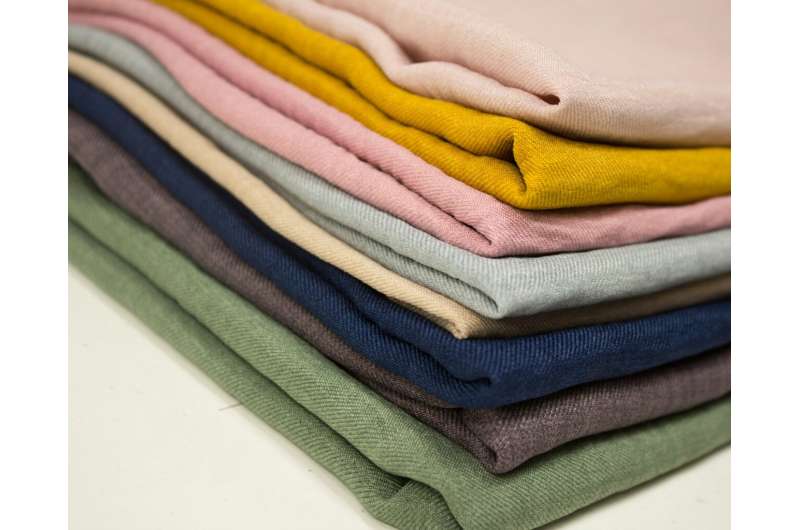
Smart textiles have the potential to revolutionize health care. In his doctoral thesis in textile technology, Emanuel Gunnarsson presents unique solutions to the bottleneck that has long inhibited the market.
With an aging population, increasing demands are being placed on health care and smart textiles can offer a solution where only imagination sets limits.
"The long-term goal of most smart textiles is for them to be so easy to use that the user doesn't think of them as anything more than regular garments. No special procedure should be needed to use them. If we succeed in that, we won't burden health care by having health care personnel administer vital parameter monitoring such as blood pressure and pulse, as the user can handle it themselves," said Gunnarsson.
In his work, he has investigated how a t-shirt for measuring heart rhythm and movement patterns, and garments for electrostimulation, can be produced in a single step. This involves the connection between the contact surfaces (electrodes), the insulated conductive paths between the electrode and the contact point, and the electrical measuring equipment required.
"This, as far as we know, has never been described before. We are completely convinced that this is the solution to a significant bottleneck when it comes to getting the smart textile market going in earnest," said Gunnarsson.
His work has resulted in two different simple ways to produce smart textiles. He demonstrates that sensors can be integrated using standard textile manufacturing methods. The research also includes criticism of some of the methods used to measure the functionality of smart textiles, and advice on how to do it better instead.
Will he continue his work? "Yes, the next natural step will be to see how these garments cope with one of the toughest challenges a garment faces, namely washing. Especially as these garments must be worn closest to the skin, they will need to be washed relatively often," said Gunnarsson.
Studies from other universities indicate that the yarns used to measure signals from the body do not withstand many washes, but after a small pilot study, Gunnarsson is hopeful of the opposite.
"I've had the privilege of having one of our very talented, ambitious, and enthusiastic textile engineering students willing to help me with this as part of their thesis. I hope we can use the results for a future peer-reviewed publication on the subject. In the longer term, we also need to conduct larger field studies to confirm the robustness of the garments. We have already conducted some field studies, but I would like to do even larger ones."
He described how the work he has done would never have been possible without the incredibly skilled technicians in the labs of the Swedish School of Textiles and the equipment they master.
"I cannot stress this enough, and I am extremely grateful to all those who have helped finance our machinery over the years and for the school's recognition of the importance of having that expertise n-site. In Borås, we have the immense advantage of being equipped with very fine laboratory environments."
More information: On the elements of E-textiles: Fabrication and characterisation of textile routing and electrodes. hb.diva-portal.org/smash/record.jsf?pid=diva2%3A1830924&dswid=-1569
Provided by University of Borås
Citation: Researcher proposes unique solution for smart textile production (2024, April 9) retrieved 9 April 2024 from https://techxplore.com/news/2024-04-unique-solution-smart-textile-production.html
This document is subject to copyright. Apart from any fair dealing for the purpose of private study or research, no part may be reproduced without the written permission. The content is provided for information purposes only.
